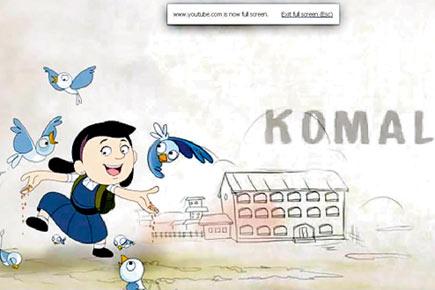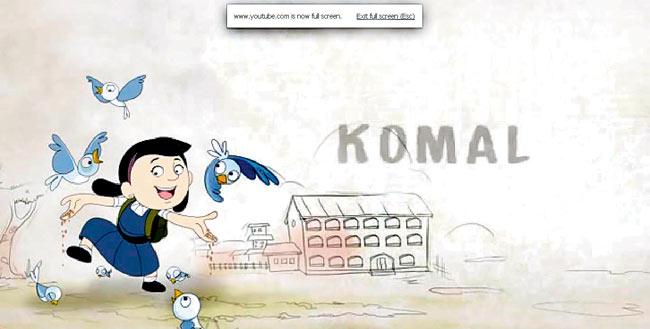Buoyed by the success of their animation video on sexual abuse of children, Childline Foundation set to launch first-of-its kind ‘accessible’ versions of the video for the differently-abled

Until recently, short film director Kireet Khurana was like most Indian parents. He knew about child sexual abuse, of course, but wasn’t well aware of facts about the crime — like the high incidence of child sexual abuse, for instance. That changed when Khurana became the creative producer and scriptwriter of Komal, a 10-minute animation video about a young girl named Komal and what happens after she gets sexually abused by her father’s friend. The video, commissioned by the non-governmental organisation, Childline Foundation, was released in January this year in 13 Indian regional languages and has crossed 2.5 million views on YouTube. NGOs in countries such as Bangladesh and Afghanistan, among others, have already requested for the video. “I remember seeing the video posted on someone’s social media account in Arabic,” says Khurana, who works for production house Climb Media.
ADVERTISEMENT

The video will benefit the hearing-impaired, the learning impared and children with dyslexia and Attention Deficit Hyper-activity Disorder (ADHD)
And now, buoyed by the success of the film, Childline Foundation is all set to launch the video in three, first-of-its kind ‘Accessible’ versions of the video for visually and hearing impaired children by the first half of May on their YouTube channel and across schools, NGOs and the foundation’s network. Each ‘Accessible’ video will have 12 versions each, in as many Indian regional languages.
“According to a 2007 survey in India (commissioned by the government), 53 per cent of children have been sexually abused. So, imagine the level of abuse among differently-abled children,” points out Nishit Kumar, head of communication and strategic initiatives, Childline Foundation.
Shilpi Kapoor, CEO and Founder of Barrier Break, who is in charge of the ‘Accessible’ videos, explains how the three videos are made and how they will benefit children with special needs. “The first version will have captioning not only for the dialogues but also other sounds that are portrayed on screen, like the sound of a passing bicycle or a ringing bell. This will benefit the hearing impaired, the learning impaired and children with dyslexia and Attention Deficit Hyperactivity Disorder,” explains Kapoor. The second version will also benefit the hearing impaired as an interpreter will narrate the entire story in Indian sign language from the bottom right corner of the screen. And the third video will help the visually impaired, who can hear the dialogues but will miss its context by not knowing about the scene's background. “In the third video, whenever there is no dialogue, another voice will describe what is there in the background — like the setting, who is there and things that the viewer should know about the background. This will help him/her get a more holistic picture of a particular scene,” says Kapoor, adding that the team’s waiting for the final cut of the film now for the launch.
 Subscribe today by clicking the link and stay updated with the latest news!" Click here!
Subscribe today by clicking the link and stay updated with the latest news!" Click here!






